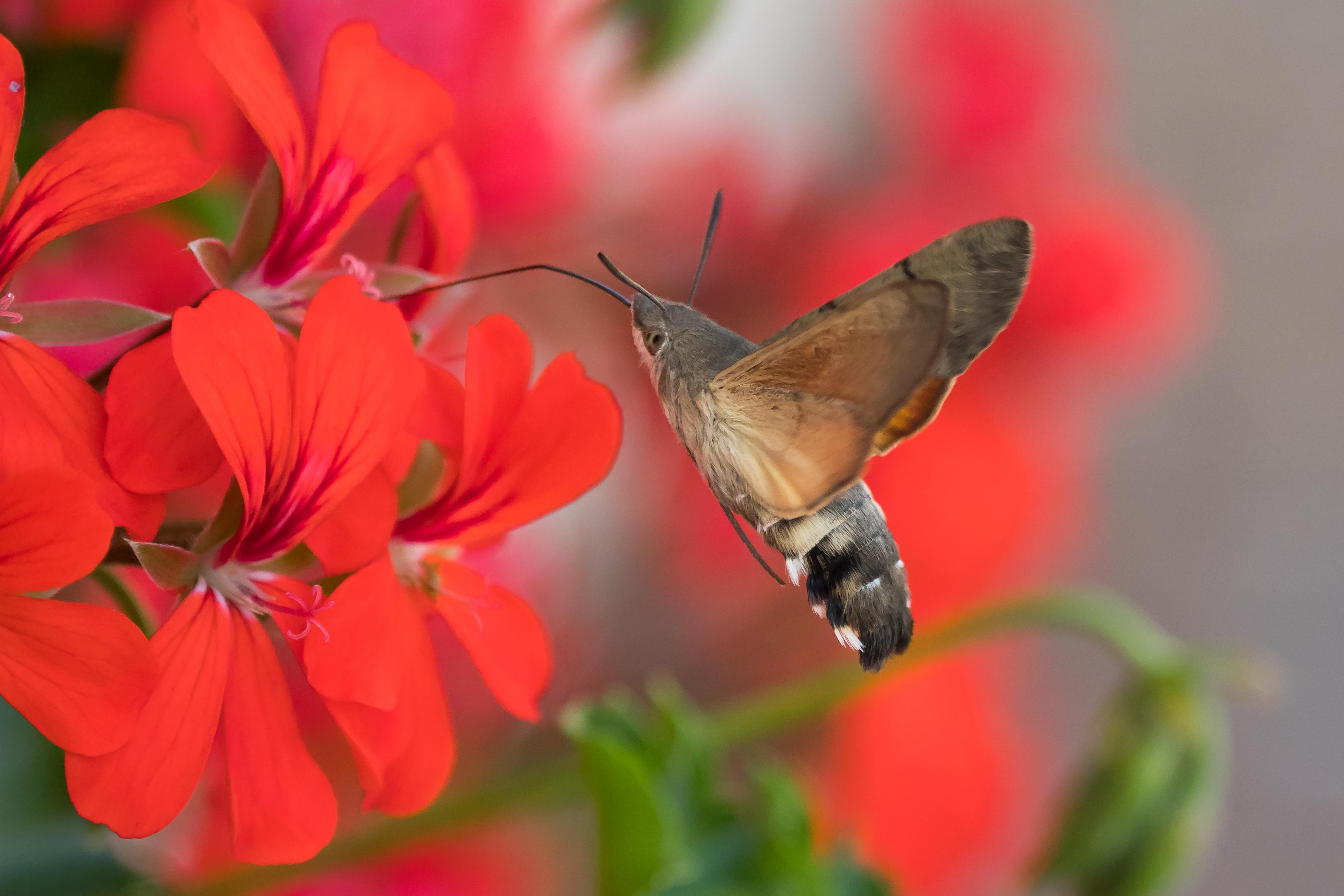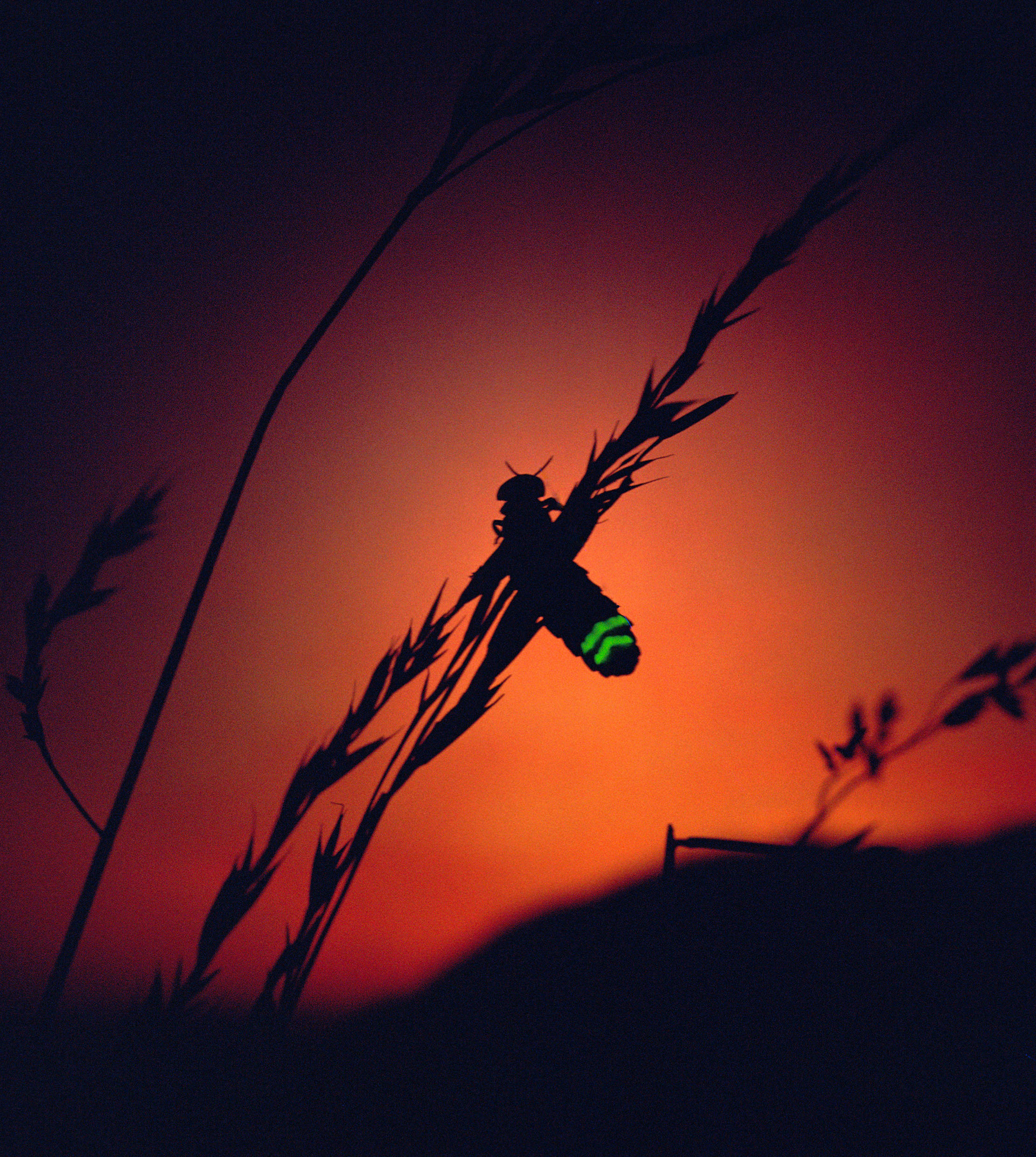The confusingly enormous hummingbird hawk-moth that looks set to become a regular fixture in British gardens
Is it a bird, is it a plane? No, it’s a hummingbird hawk-moth. Simon Lester takes a closer look at this most unusual moth, which is probing flowers in your garden now.


I wonder if Carl Linnaeus — the Swedish botanist, physician and zoologist who formalised the modern system of naming organisms — was confused when he described and recorded his first sighting of this busy, grey-looking moth in 1758.
Once you’ve seen a hummingbird hawk-moth and its impressive proboscis darting about from flower to flower (and now is very much the time to spot them), it’s easy to understand why many think they’re actually a bird. Indeed, quite apart from hovering like an exotic hummingbird, Macroglossum stellatarum clearly looks as if it has tail feathers, where most moths have a tapered abdomen.
One of our few day-flying moths, it’s believed that this intriguing species can travel as fast as 12mph, however, it’s more robust than many of our butterflies in that it continues to fly and feed in most weather conditions, even rain.
Equipped with two sets of wings (the front are grey-brown and the hind orange), they’re attracted to brightly coloured blooms, such as valerian, lavender and verbena. Those wings span 2in and beat 70–80 times a second, emitting an audible hum, and allow them to hover over plants, an ability that means these industrious migrants can fill up on the high-octane fuel of nectar they need to power their busy lives.
The hawk-moth’s inch-long, curved proboscis — which uncoils as they feed — allows it to suck up nectar from flowers that have a long corolla, such as honeysuckle, giving the moths a clear advantage over other nectar-guzzling insects. Furthermore, these whizzy hummingbird impressionists are clever, as they remember to revisit high-nectar-yielding plants.
Summer visitors from the South of France, hummingbird hawk-moths may overwinter here in mild years, but perish in cold weather. Usually seen throughout the British Isles between the months of June and September, it’s believed that numbers are boosted later in the summer by a home-reared crop.
When the male — which is about the same size as the female — has sniffed out a partner, they can be seen chasing about in a loving dogfight. After mating, she seeks out bedstraws (low-growing, perennial herbs) and wild madder on which to lay her eggs, ensuring the larvae have a food plant to dine on.
Exquisite houses, the beauty of Nature, and how to get the most from your life, straight to your inbox.

Females lay about 200 tiny, pale-green eggs — each carefully deposited to look like a bud of the host plant — on separate plants, which gives emerging caterpillars the best chance of survival.
In six to eight days, the progeny appear. Small and yellow, with horns on their rear end, they grow quickly, gradually turning green with grey stripes along the body, as those distinctive horns become blue. Some larvae even turn brown, but most get darker as they near the end of the cater-pillar stage and stop feeding.
Fully grown within about 30 days, they begin to journey down the stem of the plant to pupate in litter at the base of the plant, from where it can take three weeks for adult moths to appear in all their glory, ready to thrill and captivate more casual observers.
If climate change carries on at this pace, it won’t be long until these diminutive flying doppelgangers become permanent residents of the UK.

Why conservation must start at home: 10 British species we need to save to protect our food chain
Simon Lester sends out an SOS for 10 species that we must save to help repair an increasingly fragile food

Credit: Alamy
The six types of owl you’ll find in Britain
Gamekeeper Simon Lester offers his guide to these mesmerising creatures, from the pocket-sized Little Owl to the fearsome Eagle Owl

Credit: Getty / Duncan Usher / Minden Pictures
Beware the Great Grey Shrike: The pretty songbird with the temperament of Vlad the Impaler
Simon Lester takes a look at the great grey shrike, a delicate-looking songbird whose innocent appearance belies its sadistic tendencies

Britain’s birds of prey: The Country Life guide to all of the UK’s raptors
Raptors’ supersonic vision, effortless aerial acrobatics and ruthless hunting instinct make them the undisputed masters of the skies, but can
Country Life is unlike any other magazine: the only glossy weekly on the newsstand and the only magazine that has been guest-edited by His Majesty The King not once, but twice. It is a celebration of modern rural life and all its diverse joys and pleasures — that was first published in Queen Victoria's Diamond Jubilee year. Our eclectic mixture of witty and informative content — from the most up-to-date property news and commentary and a coveted glimpse inside some of the UK's best houses and gardens, to gardening, the arts and interior design, written by experts in their field — still cannot be found in print or online, anywhere else.

